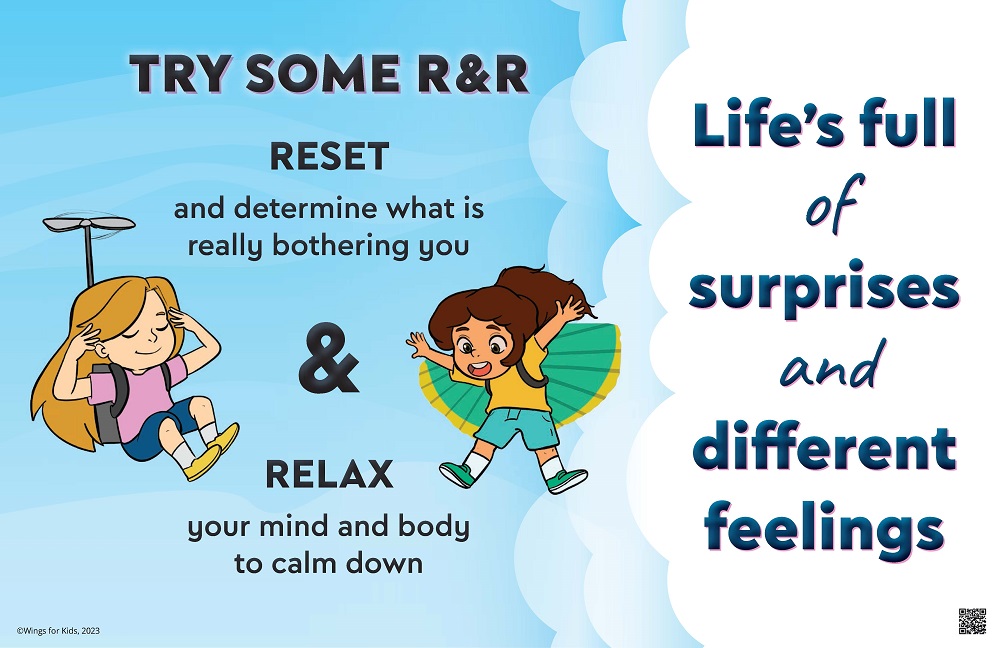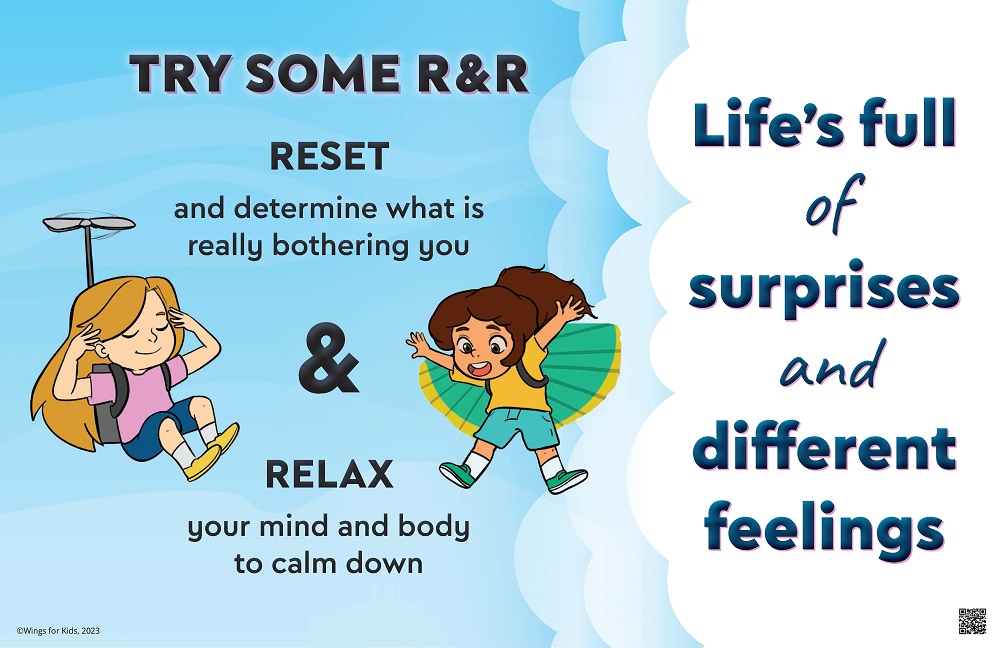Kids often have certain things set them off. Ever have a student become infuriated over a broken pencil, someone stepping on their book bag, or just the word “no”? Emotions like frustration, anger, embarrassment, guilt, shame, and excitement are strong responses that can sometimes feel overwhelming.
It’s important to learn what causes someone to lose control of their emotions and healthy ways to cope with those situations in the future.
Recognizing when you are about to lose control of your emotions and being able to pause is a target behavior for self-management.
As you introduce students to the practice of resetting and relaxing to remain in control, be sure to model your own self-management skills by sharing the emotions you are feeling and what is causing you to feel that particular way and how you are remaining calm.
Children often need help to calm down from these strong emotions because they are still developing skills to help them cope with how they feel. When kids are faced with a challenge or a surprise, and they might be on the brink of what we call an “emotional hijacking.”
Words to Live By: Life’s full of surprises that make me feel different ways.
People who understand that life’s full of surprises and different feelings can:
- Identify factors that cause stress
- Describe how various situations make them feel
- Recognize mood changes and factors that contribute to them
- Reflect on the possible consequences before expressing an emotion
We teach them to Reset & Relax.
Skill Builder
Teaching Prompts
What is something at home that frustrates you?
What is something at school that makes you feel anxious?
Share a time you had to work hard to calm down.
Tips for Teaching This Skill Builder
You’ve had a surprise happen, your emotions are all mixed up and you’re upset. When this happens, try some R&R.
Reset
Children often need help to calm down from these strong emotions because they are still developing skills to help them cope with how they feel. When kids are faced with a challenge or a surprise, and they might be on the brink of what we call an “emotional hijacking,” we teach them to Reset.
When was a time that you felt upset or worried and what happened?
When was a time you thought you were upset about someting but it turned out to be something else that was bothering you?
Example
You had plans to go to an amusement park, but when you wake up, it’s raining and the forecast predicts it’s going to rain all day.
Key Points
It is very normal to get upset about certain things.
There are lots of things that can be frustrating, annoying, or bothersome. We all have stuff that makes us upset.
What is not ok is when we allow our emotions to take over and then we lose control over our bodies, actions, and words.
Suggested Activity
Relax
Feeling many different emotions is perfectly normal when you’ve just experienced a surprise. But it’s important to then think of the best way to stay calm in those difficult moments.
This can be very challenging to do in the heat of the moment which is why it’s important to have some ideas in place when you feel yourself becoming upset. It’s important to find out what techniques work for you to help yourself remain in control.
What are some ways you can relax when you feel upset?
Example
“When I’m feeling anxious at night and can’t fall asleep, I make sure all my devices are off and put away, turn on some calming music, and take a few deep breaths to help slow my breathing.”
Key Points
Adjusting well to any surprise or challenge is difficult for anyone, especially when your emotions may be high.
When you are able to adjust well, you’ll most likely have a more positive outcome and avoid negative consequences.
Suggested Activity
Praise & Model
See your students practicing Reset & Relax or another similar self-calming technique? Don’t hesitate to give them praise.
It could sound like this: “When you recognized you needed a moment to Reset & Relax today, you showed me that you were trying to remain in control of your feelings and stay calm. Instead of losing control and not being able to participate in the activity, you were able to calm down and continue in the group. That was a good choice!”
When tensions are running high, it’s easy to lose your patience—even as an adult. You’re best able to help the child with their emotions when you’re calm yourself. Staying calm also gives you the chance to be a positive role model for managing emotions.
The next time you see a student about to lose control, remember to try Reset & Relax. You’ll see how it supports students in the moment and how it establishes a plan for the next time they feel big emotions coming on.
Check out the activities that work well with the Reset & Relax Skill Builder.

Touchdown

Hot Seat

Rhyme or Reason

Stop The Bus

Watch It Grow – Part Two

Squeak Piggy, Squeak

Virtual Games – Think Fast

Virtual Games – Guess That Tune

Virtual Games – Freeze Dance















